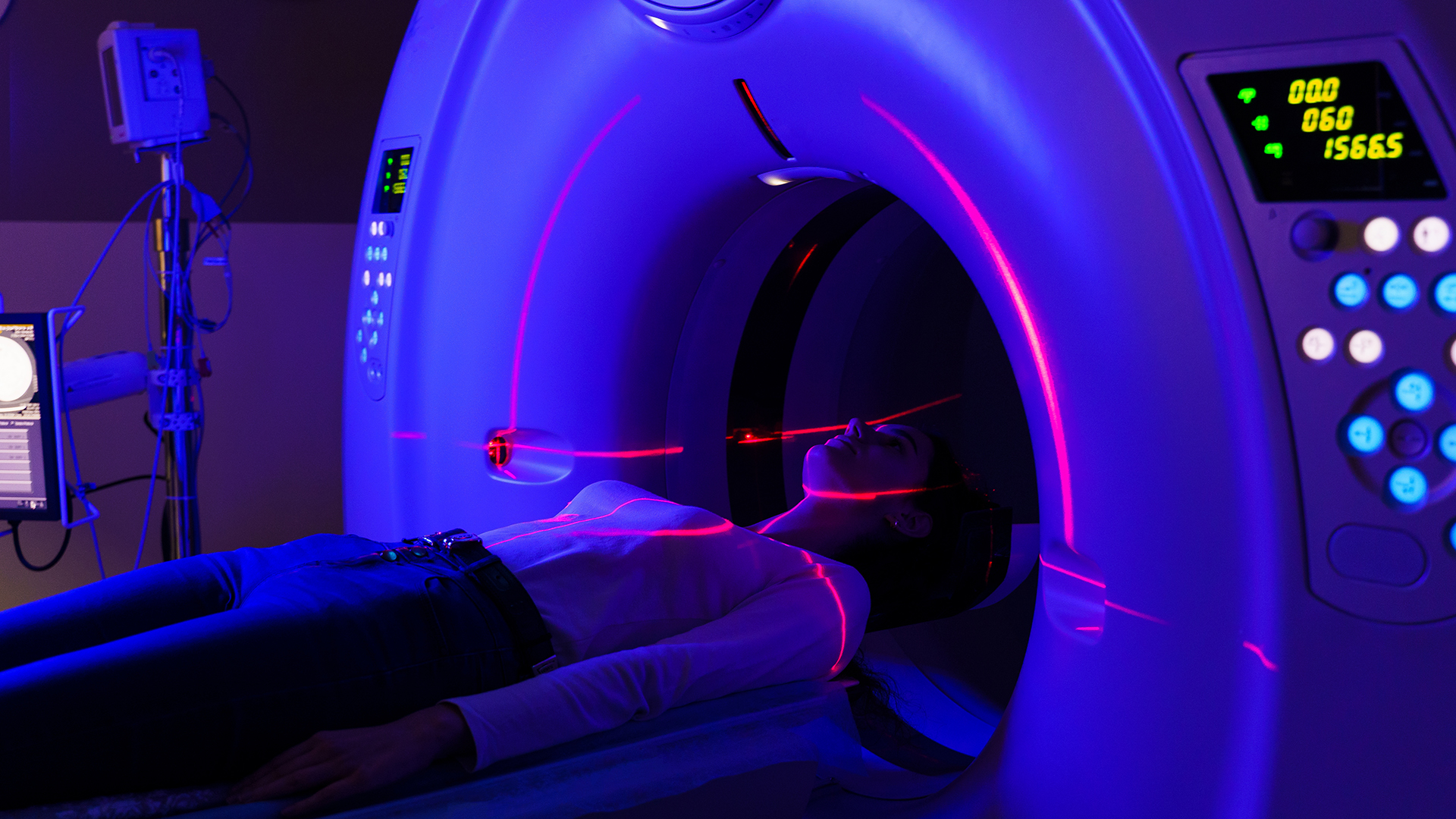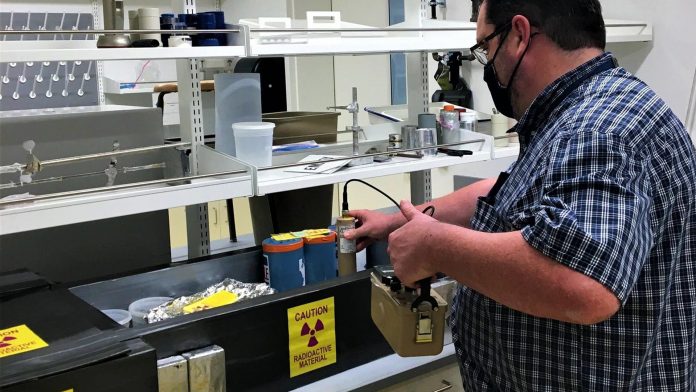Theresa Valentine Clark from the U.S. Nuclear Regulatory Commission discusses the variety of uses for radioactive materials and how the agency is regulating them.
If you have heard of the U.S. Nuclear Regulatory Commission (NRC), it is likely because we oversee 93 operating nuclear power plants in 28 of the 50 United States, or because we are licensing various new and advanced reactor designs. A less well-known part of our safety and security mission is our work with radioactive materials.
Radioactive materials are used in a huge number of ways. They are what make smoke detectors function and exit signs glow even when the power is out. They are the power behind lifesaving cancer treatments. They are how gauges and tools in industries, from oil-well characterisation to road paving to milk-bottle filling, perform their functions.
In the US, there are more than 18,000 radioactive materials licensees, with more than 83,000 sources that are radioactive enough to be tracked in our national system.
At the NRC, we ensure these sources are used safely and securely for the benefit of society. The wide variety of uses means that regulating radioactive materials is always evolving, and our community is full of creative spirit.
In this article, we will share innovation in WHAT we regulate, WHO that works for, and HOW we are conducting business.
WHAT: Ready for new technologies based on radioactive materials
Our radioactive materials experts are on the frontlines of enabling safe innovation in critical industries. Two we’ll highlight here are nuclear medicine and fusion energy systems.
About one third of all patients admitted to hospitals are diagnosed or treated using radioactive materials. Diagnostic uses include iodine to image the thyroid gland and technetium to diagnose bone, heart, or other organ problems.
Therapies use radioactive materials to kill cancer cells, shrink a tumour, or reduce pain. This might mean targeting a brain tumour with an intense beam of radiation or implanting tiny ‘seeds’ of radioactive material directly into a tumour. We have been regulating some of these techniques for decades, but new uses are frequently emerging to sustain or save lives in some of the most challenging medical situations.
Our team works closely with the U.S. Food and Drug Administration and professional societies to identify emerging technologies that medical providers might soon want to use. We want to avoid waiting for providers to ask us how they can gain access, since that might be a barrier to medical advancements.
Instead, we identify whether the technology fits within our current regulations or needs a special adaptation of the rules. Then, we tell our license reviewers how to proceed, either under a specific part of our regulations or with tailored guidance.
In this way, we ensure consistent, safe, and secure nationwide approvals.
We recently made this process even smoother by creating a ‘standing committee’ that reviews these recommendations rapidly. In this way, we have approved lutetium for prostate cancer treatment, alpha-emitters to treat solid tumors, germanium-gallium generators for diagnostic imaging, and many more.
Even our furry friends are starting to be treated with radioactive materials – such as the Exubrion arthritis treatment for dogs – and we are issuing guidance on safe use of those materials, too.
You can find more on our regulation of nuclear medicine in our Medical Uses Toolkit.
Fusion – harnessing the energy of the same nuclear reaction that powers the Sun – sparks excitement every time it is discussed.
The U.S. Department of Energy laboratories are working on scientific breakthroughs, such as the net energy gain achieved at the National Ignition Facility in California late last year. Dozens of companies are researching how to create efficient, safe fusion energy systems that could provide zero-carbon power with limited radioactive waste.
The Department of Energy is funding several of these companies on their road to commercialisation.
On the regulatory side, our Commission recently decided that we would license fusion designs under our radioactive materials framework, rather than as reactors. This approach makes sense because the simplified designs and low hazards are closer to other radioactive materials applications.
We are in the middle of adjusting our rules to make sure they fit for fusion and adapting our guidance to account for the unique aspects of fusion energy systems. Over the next couple of years, we will hold multiple public meetings and offer a formal opportunity to comment on our revised process.
You can learn more about these efforts on our Fusion Energy Systems webpage.
WHO: Strong workforce, close connections
To do all this, we need a talented workforce with skills in many disciplines. We employ engineers, scientists, security experts, and business professionals to conduct our safety and security reviews and keep our systems running.
This year, we are hoping to hire 400 people – a big goal for an agency of about 2,800 people – in every career stage and work area. Hiring will mean we can keep up on our current work and staff up for growth areas like advanced reactors.
One field we are especially focused on is health physics. Radiation, whether it is the materials we regulate or machine-produced radiation (such as dental X-rays), can be dangerous if it isn’t used safely.

© shutterstock/Rabizo Anatolii
Health physicists manage how these tools are used and make sure people stay safe. There is a worldwide shortage of trained health physicists, partly because many people haven’t heard of this interesting and important field.
At the NRC, we predicted our own shortage and are acting to reverse it. To get more health physicists in the pipeline, we broadened our university grants program to emphasise health physicists, stepped up recruiting (including offering remote work), and added more people with health-physics backgrounds to our entry-level development program.
To develop and retain the staff we have, we created a grassroots Health Physics Community for networking and learning; we’re supporting staff in pursuing their Certified Health Physicist credential; and we just announced a program to pay for full-time study toward a PhD in medical physics (a related specialty that works directly with diagnosis and treatment).
We’re not alone in this challenge, so we are working with states and other federal agencies to share strategies and refer job candidates.
You can find more about our support to universities on our Grants Program webpage.
With all this fast-paced change, it is essential that we have strong connections with our fellow regulators. This helps us have efficient, effective, and consistent regulations across jurisdictions.
One of our tightest-knit networks is the National Materials Program, which represents the joint effort of the NRC and states to regulate radioactive materials.
In 39 of 50 states, the NRC has transferred its regulatory authority for certain lower-risk materials to a state agency. These states are then called Agreement States. We co-operate closely through working groups, formal comment periods, and frequent meetings and conferences to make sure we stay consistent nationwide.
Because nearly 90% of licensees are in Agreement States’ jurisdiction, those states often are the first to regulate a new technology. This makes them essential partners in developing the medical and fusion frameworks discussed above. Three more states are pursuing Agreements; we’ve improved that public process by increasing outreach to native Tribes who might be interested in the change in jurisdiction.
You can learn about the National Materials Program on our State Communications Portal.
We also co-ordinate extensively with the international regulatory community, both the International Atomic Energy Agency (a United Nations agency based in Vienna, Austria) and individual countries’ regulators. Sharing insights makes our programs stronger and helps us stay ahead of emerging issues.
One notable example is the Code of Conduct on the Safety and Security of Radioactive Sources. Worldwide, 146 countries have committed to following this foundational document, and nearly 300 experts from 128 countries recently participated in an information-sharing meeting to learn best practices on safety and security. This represents a major increase in collaboration over the last decade.
You can see our international activities and strategies on our International Programs website.
HOW: Focus on the impact of radioactive materials
As we tackle new challenges, we are also looking at better ways to do the work already on our plate. We want to have the most efficient, effective impact on maintaining safety and security. We call this way of regulating ‘risk-informed’, because we use information on the relative risks of different materials and situations to inform how we do our business, while also ensuring that our traditional requirements are met.
This summer, we completed an update to our Inspection Manual for radioactive materials, along with ten detailed inspection procedures. Because of the wide range of technologies and industries we regulate, there isn’t a ‘one-size-fits-all’ approach.
For example, a portable gauge user has to be sure to lock up their gauges and their truck, while a fixed gauge user needs to make sure the gauge on their bottling line has a working shutter and isn’t accessed by the wrong people.
To reflect this, we gathered our inspectors’ decades of understanding about the inherent risks of licensed activities, then shaped the program into ‘risk modules’ that drive us to inspect the highest-risk areas.
Other topics have guidance that inspectors can use if needed, particularly if issues are spotted. We have also inserted ‘inspector knowledge’ tips into the procedures to help us as we train the next generation of nuclear watchdogs.
You can find more background on our inspection program updates in this June 2023 letter to our Agreement State partners.
Finally, as in almost every industry, the use of data and computing power is shaping how we do our work. The NRC and a growing number of Agreement States are using Web-Based Licensing software to manage their inspections, license reviews, and other regulatory tasks. Web-Based Licensing is just one part of a powerful suite of programs called the Integrated Source Management Portfolio.
The portfolio was created to ensure constant accountability of the highest-risk radioactive sources, then expanded to perform various important safety and security functions.
This software enabled us to shift smoothly to a nearly all-online posture during the COVID-19 pandemic and makes continuous monitoring of our performance a breeze. Using these tools, we now have multiple dashboards and data visualisations that let us answer questions in one button push that could have taken hours of analysis in the past.
Examples range from estimating levels of effort to set our fees, to calculating licensing or inspection timeliness metrics, to automating reports on who has submitted their source inventory updates. This frees up our staff’s time to focus on the highest-impact safety and security work.
You can learn more about these tools on the Integrated Source Management Portfolio website.
If these innovations – and the creative spirit behind them – have fueled your excitement about the NRC, you can explore the links above and the NRC website. You might even consider applying for an NRC job. Did we mention we are hiring?
About the author
Theresa Valentine Clark is the Deputy Director of the Division of Materials Safety, Security, State and Tribal Programs at the NRC.
Clark has worked at the NRC for over 20 years in a variety of technical, policy support, and supervisory positions, in both reactor and radioactive materials regulation. She has represented the United States internationally in peer missions, technical working groups, and meetings of the Convention on Nuclear Safety and Code of Conduct on the Safety and Security of Radioactive Sources.
Clark is also passionate about recruiting, mentoring, and diversity. As past chair and current executive sponsor of the NRC’s Native American Advisory Committee, she is focused on increasing the NRC’s recruiting reach to Native communities and strengthening cultural awareness at the agency. You can connect with Clark on LinkedIn or at Theresa.Clark@nrc.gov.
Please note, this article will also appear in the fifteenth edition of our quarterly publication.









